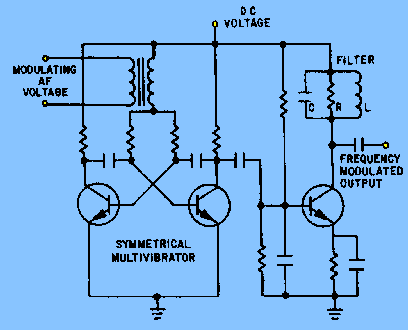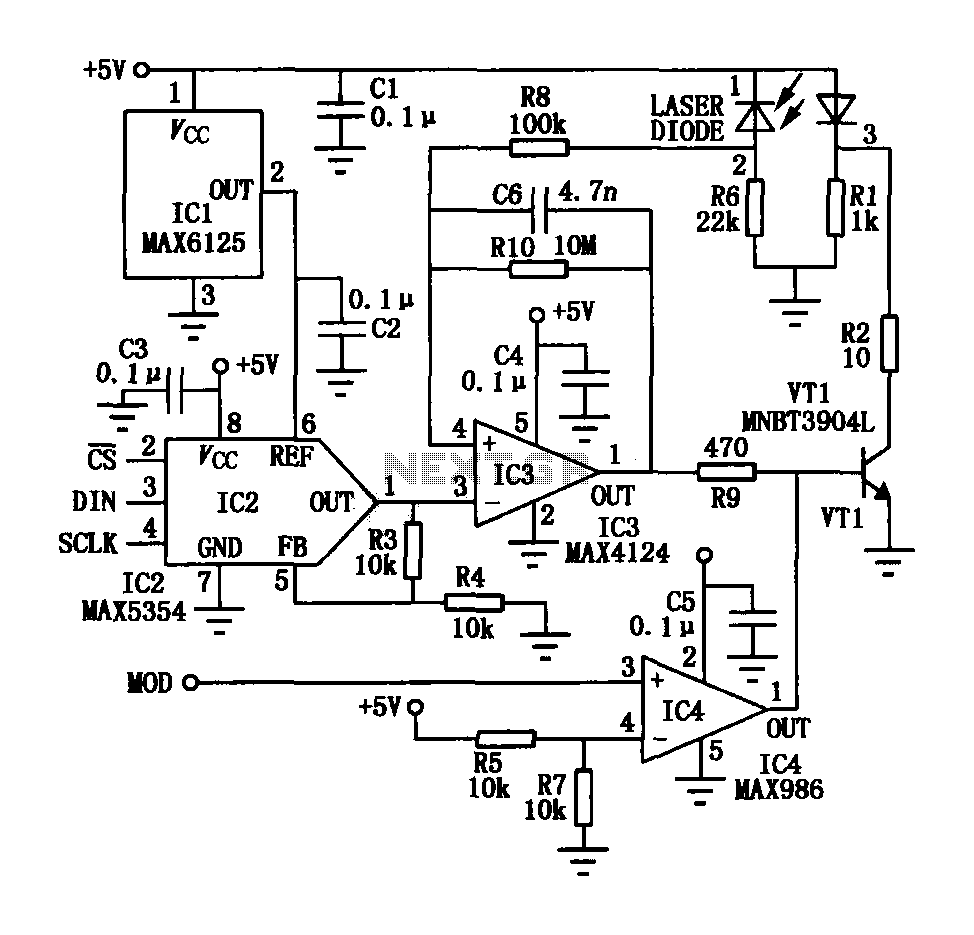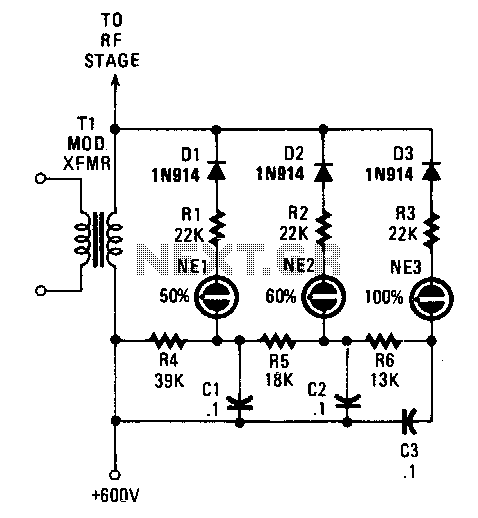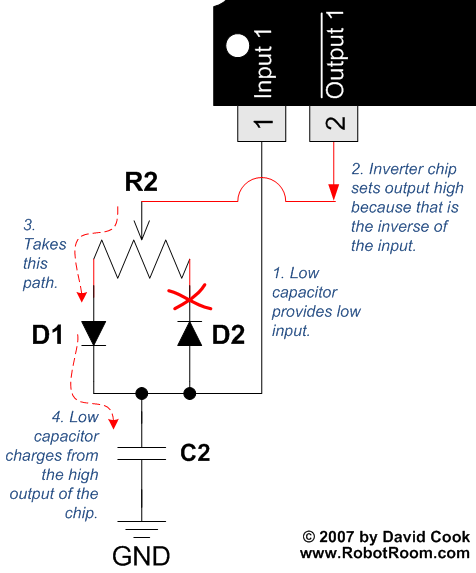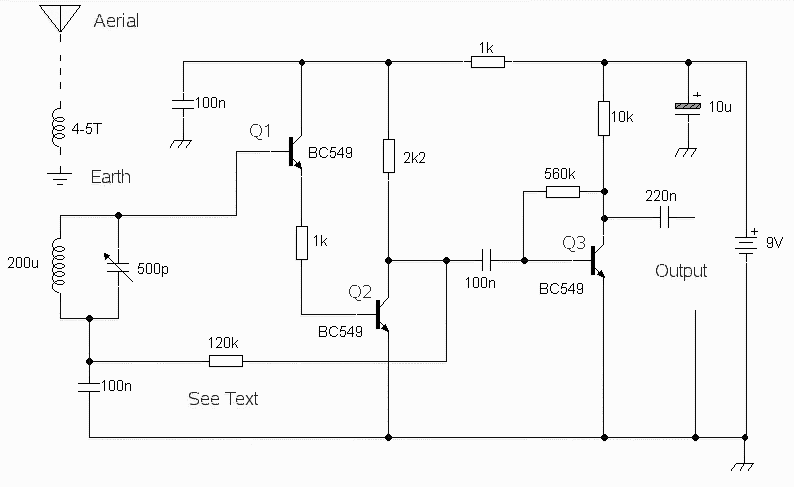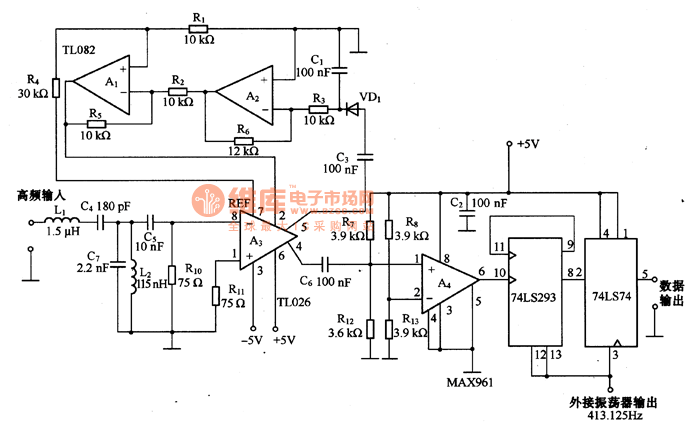
modulation
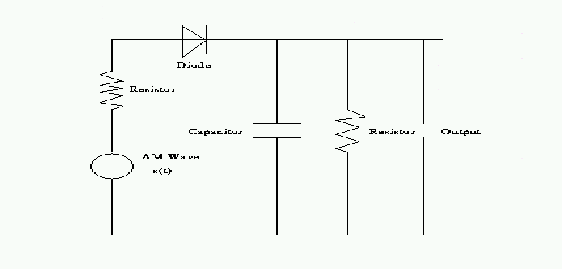
A reason to modulate a message signal is to match the communication channel's frequency. This is necessary because the information to be sent over the channel is often at a relatively low frequency. For instance, the frequency range of music is approximately 100 to 15,000 Hz, making it challenging to transmit such low-frequency signals over long distances. Low-frequency signals are susceptible to interference from other similar signals. Various modulation techniques exist, with a focus on standard amplitude modulation in this context. Other modulation methods include frequency and phase modulation. In amplitude modulation, the modulator combines the carrier wave (Fig 1) and the message signal (Fig 2) to create a modulated wave (Fig 3), which is a carrier wave with varying amplitude. The frequency values chosen for the figures are for illustrative purposes only; actual frequencies are typically higher. The message signal is represented as a cosine or sine wave, while the carrier wave has a significantly higher frequency compared to the message signal. Mathematically, the message signal can be expressed in terms of amplitude sensitivity (Ka) of the modulator or transmitter. The amplitude of the modulated wave is referred to as the envelope (a(t)). The modulation percentage depends on the absolute value of Ka*m(t). If this value is less than or equal to 1 for all t, the modulation percentage is at or below 100%. Conversely, if the absolute value exceeds 1 at any point, the modulation percentage exceeds 100%, resulting in overmodulation. For example, if |Ka*m(t)| equals 0.7, the modulation percentage is 70%. If |Ka*m(t)| equals 1.1, the modulation percentage is 110%. A modulation percentage of 100% or less simplifies the demodulation circuit used to extract the message signal from the incoming AM wave. Two conditions must be met for the envelope a(t) to accurately represent the message signal m(t): the modulation percentage must be below 100% to avoid distortion of the envelope, and the message bandwidth must be small relative to the carrier frequency. The demodulation circuit for the envelope is known as an envelope detector, which consists of a low-pass filter made up of a resistor, a capacitor, and a diode. Figure 4 illustrates a simple circuit diagram of the envelope detector. This circuit acts as a low-pass filter, allowing low-frequency components of the modulated wave (s(t)) to pass to the output while filtering out high-frequency components. The resistor and capacitor values dictate the frequency range that can appear at the output. Amplitude modulation is still in use today, particularly in AM broadcast radio stations and in television broadcasting, where it is employed for the transmission of picture information, while sound transmission is done using frequency modulation.
In an amplitude modulation (AM) system, the modulation process is critical for adapting low-frequency information signals for effective transmission over communication channels. The carrier wave, which operates at a much higher frequency, serves as the basis for conveying the message signal. The modulation process involves varying the amplitude of the carrier wave in accordance with the instantaneous amplitude of the message signal, thus creating a composite signal that can be transmitted over long distances while minimizing interference.
The mathematical representation of the message signal and its modulation is essential for understanding the system's performance. The modulation index, defined as the ratio of the peak amplitude of the message signal to the peak amplitude of the carrier wave, plays a pivotal role in determining the quality of the transmitted signal. Maintaining the modulation index below 1 ensures that the envelope of the modulated signal accurately reflects the original message, thus facilitating easier demodulation at the receiving end.
The envelope detector, a fundamental component in the demodulation process, utilizes a diode to rectify the modulated signal, allowing only the positive half-cycles to pass. The subsequent low-pass filter, composed of a resistor and capacitor, smooths out the rectified signal, effectively reconstructing the original message signal. The design parameters of the envelope detector, including the values of the resistor and capacitor, must be carefully selected to ensure that the cutoff frequency of the low-pass filter is appropriate for the bandwidth of the message signal, thereby optimizing the recovery of the original information.
In practical applications, AM remains prevalent in various broadcasting technologies, including radio and television. The robustness of AM against certain types of interference, combined with its simplicity in implementation, ensures that it continues to be a valuable method for transmitting audio and visual information across diverse platforms. Understanding the principles of amplitude modulation and the design of associated circuits is crucial for engineers working in the field of communications and signal processing.As mentioned before, a reason to modulate a message signal is to match the communication`s channel frequency. The reason for this is that information to be send over the channel is often at a rather low frequency.
For example, the sound of music range in frequency from about 100 to 15, 000 Hz. It is very difficult to send such low-frequency signals over great distance. Low frequency signals will be interfered by other similar signals. There are many techniques for modulation. The technique that we will emphasis on is standard amplitude modulation. There are also many other modulations including methods using frequency and phase. In amplitude modulation, the circuit or the modulator combines the carrier wave (Fig 1) and the message signal (Fig 2) to form a modulated wave (Fig 3) that is a carrier wave with change in amplitude. The frequency that I choose for the figures is for examples only. In reality, the value of the frequency is higher. The message signal is a cosine wave or a sine wave. In another word, the message signal is a sinusoidal wave function. This is the same for a carrier wave except its frequency is very large when compare to the frequency of the message signal.
Let us use mathematical terms to relate our signals. For the message signal in the above example, the following mathematical expression represents it. The constant Ka is the amplitude sensitivity of the modulator or the transmitter. The amplitude of equation 3 is called the envelope of the AM wave. We can represent that as a(t). The percentage of modulation will depend on the absolute value of Ka*m(t). If the absolute value of Ka*m(t) is less or equal to 1 for all t, then the percentage of modulation is less than or equal to 100%. However, if the absolute value of Ka*m(t) is greater than 1 for some t, then the percent of modulation is in excess of 100% or overmodulation.
The following table summarizes the modulation percentage. For example, assume that the value of |Ka*m(t)| is 0. 7, then the percentage of modulation is 70%. Therefore, if |Ka*m(t)| is 1. 1, then the percentage of modulation is 110%. If the percentage of modulation is less than or equal to 100%, then the demodulation circuit used to recover the message signal from the incoming AM wave is greatly simplified. There are two conditions to be satisfied in order to produce an a(t) or envelope of the modulated wave to be the same shape as the message signal m(t).
The first condition is that the percentage of modulation is less than 100% so the envelope or a(t) is not distorted. The second condition is that the message bandwidth is small compared to the carrier`s frequency. The demodulation circuit for the envelope is called the envelope detector. It is just basically a low-pass filter consists of a resistor, a capacitor and a diode. Figure 4 shows a simple circuit diagram of the envelope detector. The above circuit diagram is a low pass filter which just consists of a capacitor and resistor. The purpose of a low pass filter is to allow low frequency component of the s(t) or the modulated wave to pass to the output while the high frequency component is filter out in the process.
The values of the resistor and the capacitor determine how low the frequency will be able to appear at the output. Amplitude modulation is still in used today. Some its usage is AM broadcast radio stations. AM is still used in television broadcasting as a method for transmission of picture information while the sound is done by FM.
🔗 External reference
In an amplitude modulation (AM) system, the modulation process is critical for adapting low-frequency information signals for effective transmission over communication channels. The carrier wave, which operates at a much higher frequency, serves as the basis for conveying the message signal. The modulation process involves varying the amplitude of the carrier wave in accordance with the instantaneous amplitude of the message signal, thus creating a composite signal that can be transmitted over long distances while minimizing interference.
The mathematical representation of the message signal and its modulation is essential for understanding the system's performance. The modulation index, defined as the ratio of the peak amplitude of the message signal to the peak amplitude of the carrier wave, plays a pivotal role in determining the quality of the transmitted signal. Maintaining the modulation index below 1 ensures that the envelope of the modulated signal accurately reflects the original message, thus facilitating easier demodulation at the receiving end.
The envelope detector, a fundamental component in the demodulation process, utilizes a diode to rectify the modulated signal, allowing only the positive half-cycles to pass. The subsequent low-pass filter, composed of a resistor and capacitor, smooths out the rectified signal, effectively reconstructing the original message signal. The design parameters of the envelope detector, including the values of the resistor and capacitor, must be carefully selected to ensure that the cutoff frequency of the low-pass filter is appropriate for the bandwidth of the message signal, thereby optimizing the recovery of the original information.
In practical applications, AM remains prevalent in various broadcasting technologies, including radio and television. The robustness of AM against certain types of interference, combined with its simplicity in implementation, ensures that it continues to be a valuable method for transmitting audio and visual information across diverse platforms. Understanding the principles of amplitude modulation and the design of associated circuits is crucial for engineers working in the field of communications and signal processing.As mentioned before, a reason to modulate a message signal is to match the communication`s channel frequency. The reason for this is that information to be send over the channel is often at a rather low frequency.
For example, the sound of music range in frequency from about 100 to 15, 000 Hz. It is very difficult to send such low-frequency signals over great distance. Low frequency signals will be interfered by other similar signals. There are many techniques for modulation. The technique that we will emphasis on is standard amplitude modulation. There are also many other modulations including methods using frequency and phase. In amplitude modulation, the circuit or the modulator combines the carrier wave (Fig 1) and the message signal (Fig 2) to form a modulated wave (Fig 3) that is a carrier wave with change in amplitude. The frequency that I choose for the figures is for examples only. In reality, the value of the frequency is higher. The message signal is a cosine wave or a sine wave. In another word, the message signal is a sinusoidal wave function. This is the same for a carrier wave except its frequency is very large when compare to the frequency of the message signal.
Let us use mathematical terms to relate our signals. For the message signal in the above example, the following mathematical expression represents it. The constant Ka is the amplitude sensitivity of the modulator or the transmitter. The amplitude of equation 3 is called the envelope of the AM wave. We can represent that as a(t). The percentage of modulation will depend on the absolute value of Ka*m(t). If the absolute value of Ka*m(t) is less or equal to 1 for all t, then the percentage of modulation is less than or equal to 100%. However, if the absolute value of Ka*m(t) is greater than 1 for some t, then the percent of modulation is in excess of 100% or overmodulation.
The following table summarizes the modulation percentage. For example, assume that the value of |Ka*m(t)| is 0. 7, then the percentage of modulation is 70%. Therefore, if |Ka*m(t)| is 1. 1, then the percentage of modulation is 110%. If the percentage of modulation is less than or equal to 100%, then the demodulation circuit used to recover the message signal from the incoming AM wave is greatly simplified. There are two conditions to be satisfied in order to produce an a(t) or envelope of the modulated wave to be the same shape as the message signal m(t).
The first condition is that the percentage of modulation is less than 100% so the envelope or a(t) is not distorted. The second condition is that the message bandwidth is small compared to the carrier`s frequency. The demodulation circuit for the envelope is called the envelope detector. It is just basically a low-pass filter consists of a resistor, a capacitor and a diode. Figure 4 shows a simple circuit diagram of the envelope detector. The above circuit diagram is a low pass filter which just consists of a capacitor and resistor. The purpose of a low pass filter is to allow low frequency component of the s(t) or the modulated wave to pass to the output while the high frequency component is filter out in the process.
The values of the resistor and the capacitor determine how low the frequency will be able to appear at the output. Amplitude modulation is still in used today. Some its usage is AM broadcast radio stations. AM is still used in television broadcasting as a method for transmission of picture information while the sound is done by FM.
🔗 External reference
